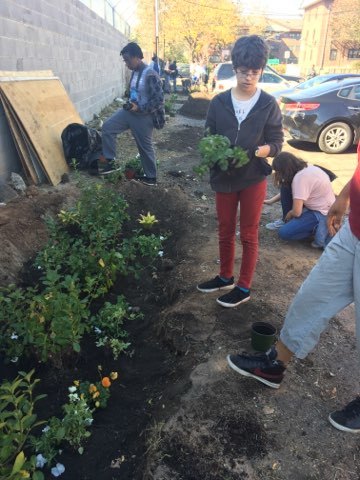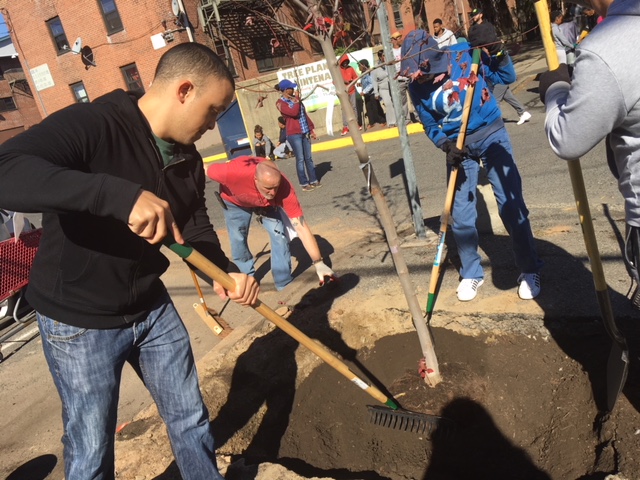Preparing for the Next Superstorm in Jersey City
The Problem
Jersey City is susceptible to natural disasters like Superstorm Sandy, which devastated the city in 2012.
- Even moderate rain storms cause street flooding due to geography, the prevalence of impervious surfaces, and an antiquated stormwater infrastructure that combines sewage and stormwater runoff.
- While the city had made strides improving disaster preparedness and stormwater management since Sandy, there is still substantial room for improvement.
- Low-income neighborhoods in Jersey City, many of which are located in flood-prone areas, were disproportionately affected by storms and disasters.
The Solution
Through the Cities of Service Prepared Together program, the city empowered housing authority residents throughout Jersey City to improve stormwater management and improve green infrastructure with mini-grants, tree plantings, and an adopt-a-drain program, and provided disaster readiness training.
- The AmeriCorps VISTA members helped the city form relationships with housing authority residents by responding to requests from community members, such as additional tree plantings and installing rain gardens in their neighborhood.
- The city awarded mini-grants to support community projects to further address flooding, such as creating rain gardens and tree plantings.
- In partnership with the Jersey City Housing Authority, AmeriCorps VISTA members offered a series of workshops, including topics like performing CPR and tree maintenance, to help residents become active participants in disaster preparedness in their own communities.
The Results
The city replaced forgotten, impermeable spaces with much needed green space and sparked collaboration and dialogue between residents and the city.
- The city leveraged Cities of Service funding to attract additional funds from AARP, which led to tree plantings in Marian Gardens affordable housing complex. This spurred community members to expand the project and create garden boxes and a mural.
- 25 new trees were planted and 116 are being cared for by volunteers.
- 156 people received training on extreme weather preparation and 20 people were certified as Community Emergency Response Team (CERT) members, who are trained to respond in an emergency.
- 276 catch basins were adopted by residents and community groups who clean and maintain them so they can adequately drain storm water.
Keys to Success
The disaster preparedness workshops were an important way to create relationships with citizens.
- Since Hurricane Sandy, city hall and many residents have been concerned about disaster preparedness, and when the city began to offer workshops the number of attendees grew quickly.
- Additionally, the presence of the AmeriCorps VISTA members in the community as they coordinated workshops and responded to community requests made residents feel that the city was paying attention to them and their needs.
- These relationships have helped raise up leaders in the community who continue to work on greening their neighborhoods and maintaining green infrastructure, building a sense of community ownership and pride.


